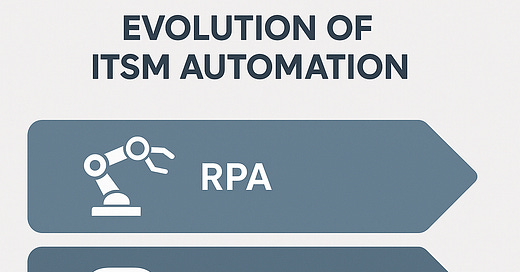Beyond Automation: How Agentic AI is Reimagining IT Service Management
Why the shift from scripted bots to autonomous agents is less about technology and more about redefining the relationship between humans and machines in the service desk of the future.
Keep reading with a 7-day free trial
Subscribe to Xentrixus to keep reading this post and get 7 days of free access to the full post archives.





